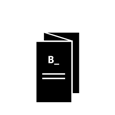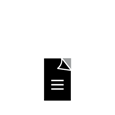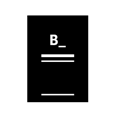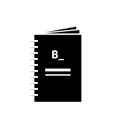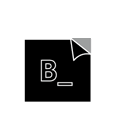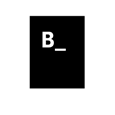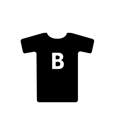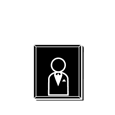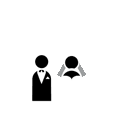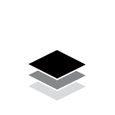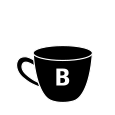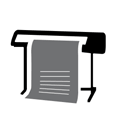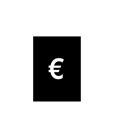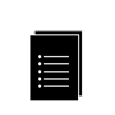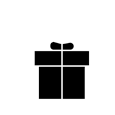Reduce your printing expense
PRINT FOR LESS
HOW TO PRINT AT LESS EXPENSE?
Tricks for printing with the same quality, but for less money
All printing projects are subject to a series of parameters or decisions that will determine both the quality and the cost of the project. But you can often change certain parameters that are irrelevant to you, and obtain a significant discount off the price. That is why when trying to reduce printing costs, the key lies in understanding what you really need, which aspects are essential and which ones aren't.
The first aspects to affect the cost will be the size and number of pages (if any) of your original. As of this, the quantity of units to be printed and the urgency, which will determine the printing technology, i.e. digital or offset. Then the support: lightweight cardboard, vinyl, canvas or paper, and in this case the type of paper (glossy, rustic), weight (from 80 to 300 gram), etc. As of this, the number of colours used and the type of inks. And lastly, the handling: cutting, gluing, stapling, folding, binding...
DIGITAL or OFFSET
A key decision which will determine many other parameters: offset or digital.
Digital Printing is ideal for short runs, normally up to 1,000 DINA4 pages, or about 5,000 business cards, 3,000 flyers, or 100 12-page catalogues. It is very fast, can be done on the spot, does not require waiting times. As there are no initial costs (layouts, plates..), you can order just one unit if that's what you want. It is perfect for test runs, so you can see what they will look like... Using more colours hardly affects the price, as well as it not decreasing much as you increase the number of units. Units are cut by hand using a guillotine. Digital printing does not allow for pantones, or metallic inks, or edge-to-edge printing and has several limitations in so far as the measurements and materials (paper cannot exceed 200 gram, fabrics must be made of cotton, etc.).
Offset Printing is aimed for large projects, as of 2,000 DINA4 pages, or about 10,000 business cards, 5,000 flyers, or 500 12-page catalogues. As this is a mechanised process, there are certain initial costs, but then the price drops considerably as the number of printed units increases. Allows for maximum control of the quality, as well as the use of pantones and special inks, but the number of colours used does affect the price. Units are cut using a machine with a die. These require production and drying time. There are no limits in so far as materials.
An intermediate solution for large, but urgent projects, is often to launch Offset, in order to make the most of the cheaper prices, but in the meantime run a small run using Digital, to have access to a few printed units in a short time.
MATERIAL, INKS, COLOURS, HANDLING...
Specific parameters for each technique, which must be chosen carefully.
The paper, with its countless varieties of types, weights and finishes, is the most versatile material. You can reduce the cost by reducing the weight of the paper or by using paper we stock rather than choosing a special type of paper. You are better off using standard sizes (DIN standard), to make the most of the paper, although you can reduce the size to reduce costs. However everything has its limits: try to make sure you use a weight of at least 250 grams for cards and a coated matt finish for example, use photographic paper for posters, etc.
There are many other materials such as canvas, vinyl or fabric, each of which with their own specific parameters (weave or number of threads for fabrics, etc.). And we come to the supports, for providing rigidity, such as lightweight cardboard, Forex, wooden or other material frames, etc.
The inks and/or colours are another important aspect. You can reduce costs by avoiding special inks such as metallic ones (gold, silver, etc.), but if you are going to print let's say a canvas, sign or vinyl for outdoors, don't forget to use UVI inks. Try to reduce the number of colours if they aren't necessary, for example stickers for packages.
Finishes such as coated or laminated, provide greater quality to the printing and don't tend to increase the cost too much.
Handling is any process that is carried out after the printing, the basic ones include cutting (guillotine or die), and folding (leaflets), the cost of which is very reasonable. After this, the binding (wire-o, milling, etc.), assembling the frame (photo-paintings), and especially the gluing (displays), bagging, adding eyelets to advertising canvases, etc, have a more significant cost that should be assessed.
BARCINO, LET US ADVISE YOU
We'll help you print with the highest quality and at the lowest price
At Barcino we will help you reduce the printing cost to a minimum, but without loosing out on quality. That is why we like to spend time with each client, to understand their priorities and advise them so their cards are perfect, without spending any more money than they need to spend. A good tip can actually improve the quality of your printing, as well as reduce the cost: dies, inks, finishes...
Come and see us, we're in the centre of Barcelona (Eixample district).
A reliable, fast and well-priced printing company.

